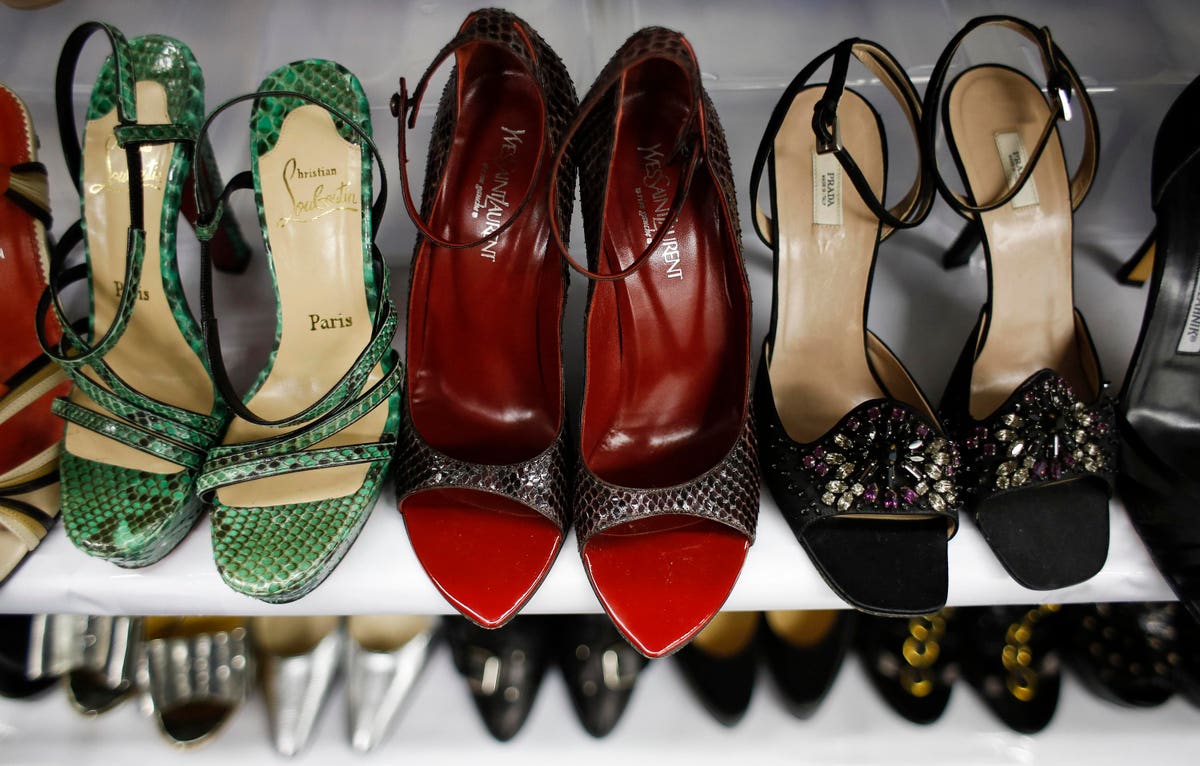Anyone who doubts that sales of secondhand clothing can outpace those of new clothing should check out the price of a pair of used jeans at a thrift store.
Or of secondhand leggings – going for $17.99, according to one TikTok user. But as “Second Hand September” enters full swing, the mainstreaming of thrift shopping is evidently raising the willingness of consumers to pay higher prices.
By 2027, the U.S. secondhand apparel market is projected to be worth $70 billion, from $39 billion in 2022, according to the latest annual Resale Report by ThredUp, the online consignment and thrift store. That projected growth is nine times greater than the overall retail clothing sector, thanks to assistance by major players and brands in the overall retail clothing sector that now offer resale. These include Coach, REI, Patagonia, Eileen Fisher, Lululemon, Dillard’s, Levi’s and many more.
Sustainability and value are without question key drivers of this growth, as is the creative flexibility secondhand styles afford. But profit-taking also is guiding the industry’s boom, and that threatens the good-intentioned trajectory behind the movement.
Secondhand Choices Are Forming First-Class Business Models
Fueled in part by a movement to counter the wastefulness of fast fashion, secondhand style might now be at risk of defeating its own purpose. A glut of secondhand finds are being resold at markups that are reportedly too rich for young and price-conscious shoppers, the sector’s traditional core market.
If the target consumers of thrift shopping can no longer afford it, where do they go? Is secondhand fashion becoming too exclusive?
Some evidence suggests it might be.
Hoarding resellers are driving up prices. Individual shoppers spotted the get-rich opportunity in resale early, as Business Insider has documented. Those with means are buying armloads of fashions at thrift stores and then reselling their discoveries on marketplace sites such as Poshmark, Mercari and Depop at sizeable markups. These entrepreneurs document their thrift-hauling strategies on social media as well – one enterprising user is instructive about how he locates, buys and resells his treasures for a nice profit. These higher prices in turn influence the overall market, and its power has been building for a while.
Some thrift stores are becoming bougie. Many of those secondhand entrepreneurs and social media influencers got their treasure troves from a common source – traditional thrift stores, including Goodwill, Salvation Army and regional shops. Soon previous non-thrifters began checking out these stores as well. It was just a matter of time before these retail operators began to rethink their prices on “covetable, profitable gems,” according to The Week. Now low-income shoppers lament that the prices at these outlets are getting too steep for their budgets. The Berkeley Economic Review explored this possibility way back in 2019; in 2021, Vox described the trend as the “gentrification” of thrift stores.
There’s a secondhand and vintage learning curve. Many employees at thrift and secondhand shops evidently aren’t schooled on what defines vintage, versus secondhand, as reflected in some prices. Shoppers are finding common fast-fashion brands, including Shein, Forever 21 and Hollister, at thrift stores at prices higher than new (and posting it on TikTok). Meanwhile, resellers are flooding marketplaces such as Poshmark with a wide range of goods and prices. This product saturation is likely to cause prospective buyers to throw up their hands and give lowball offers, because they have no idea of the value. There’s simply TOO MUCH to research and haggle over.
There are other price curveballs. Shoppers have complained that the prices assigned to many “better” designer brands, such as Miu Miu and Polène, are nearly as high on secondhand sites as they would be new. This can stem in part from the service costs of selling through third-party sites, such as The RealReal, which charges commissions and fees that can eat up to 80% of an item’s price tag. If someone sells a sweater for $99, the payout is only $19, while something that sells for $200 clears $110. One “RealReal stalker” documents the variability of prices from its brick stores to its website.
Fast fashion isn’t shrinking. Those throwaway garments that had partly inspired the secondhand-clothing movement might now, ironically, be viewed as the most affordable fashion finds. This could especially be the case among price-sensitive shoppers who can no longer afford secondhand clothing. Further, some big fast-fashioned brands seeing the opportunity in resale, have launched their own secondhand and take-back programs. H&M Re:Wear and Shein Exchange are two examples. This second revenue stream will likely contribute to fast fashion’s projected growth: The market is expected to reach $185 billion in 2027, from $106 billion in 2022, Statista reports.
Look Again: Secondhand Has Been Changing For Generations
Thrift shopping has been popular in the U.S. for nearly 100 years, so it took more than a century for secondhand shopping to get its own month – Secondhand September. Just goes to show you that what’s old is new again, and again, and again.
Secondhand retailers should beware, however: shoppers today have more power to determine the course of this industry – potentially more than retailers. Social media posts that reveal corporate profit-taking, greenwashing and other exploitive practices can have unpredictable repercussions.
The prices at thrift stores are going up, but the cost to the apparel industry of not taking responsibility for the reasons behind this change – including waste and climate change – might be harder to recoup.
Read the full article here





